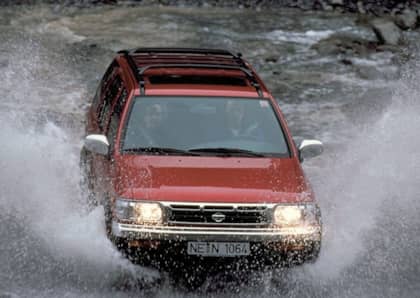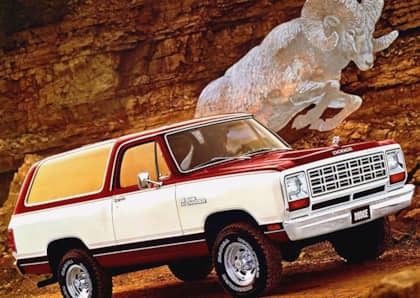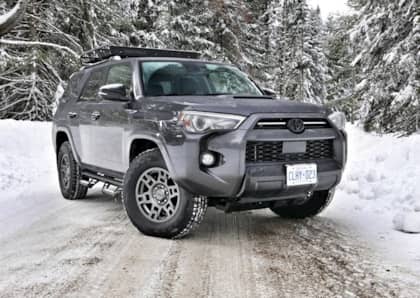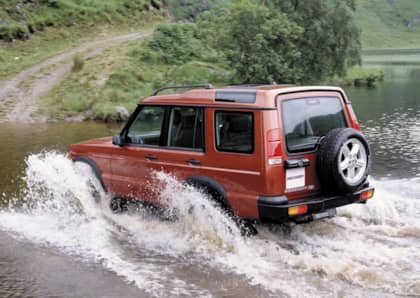The Dodge Ramcharger And Plymouth Trail Duster SUVs Are Under-The-Radar SUVs That Deserved A Better Fate
The 1970s gave birth to a new wave of sport-utility vehicles that for the first time adapted full-size pickup truck platforms with passenger-friendly body styles. With the Ford Bronco late to the game in offering a truck-based SUV (not appearing in 1978), the movement was lead by Chevrolet and GMC with the Blazer and the Jimmy respectively.
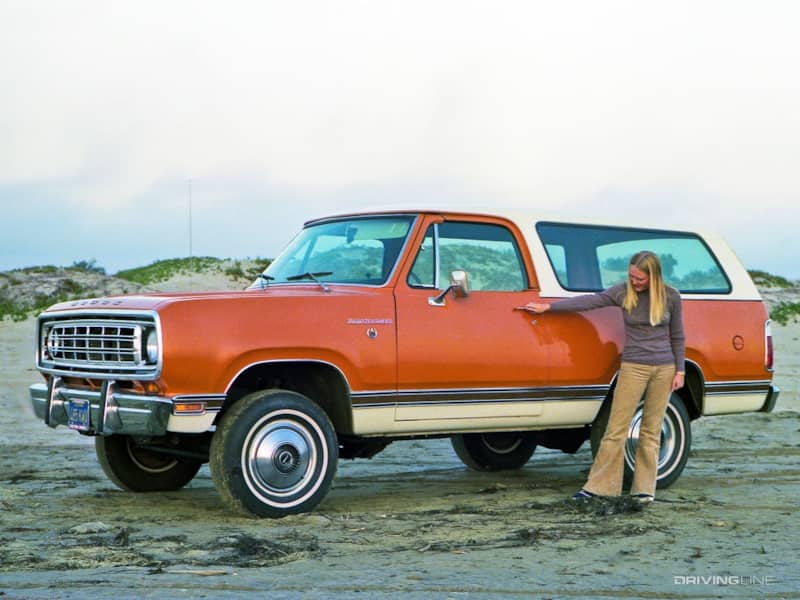
Sensing a gap between Ford's smaller Bronco and the popularity of the Blazer/Jimmy pairing, Chrysler decided to get in on the sport-utility action, too. Thus was born the Dodge Ramcharger and its lesser-known sibling the Plymouth Trailduster. The Ramcharger spent nearly 20 years as Chrysler's flagship SUV, but by the 1990s a number of different factors conspired to cut the vehicle's lifespan short, ending a long and colorful chapter as the toughest Dodge on the showroom floor.
Basic, Basic, Basic
There had been plans to dub the stubby off-roader the 'Rhino,' but instead Ramcharger badge was chosen in part to link the SUV to Dodge's performance past, calling to mind a racing effort that had little to do with the truck market but probably made sense to the company's marketing executives.
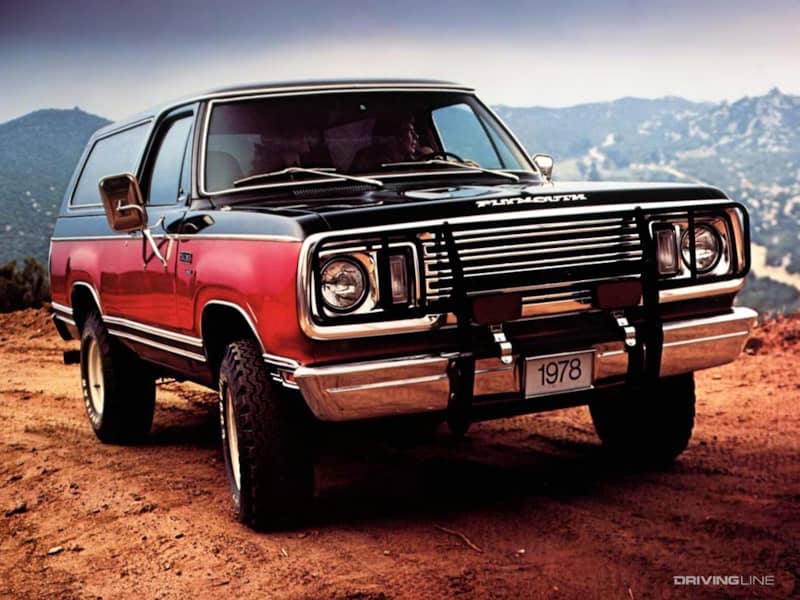
As with its cross-town rivals, the original 1974 Dodge Ramcharger borrowed the full-frame from the brand's D Series pickups and then plunked a roof over the back half of the short box body style, which had been further shrunk by 9 inches or so to improve maneuverability on the trail. Whereas the Bronco and the Blazer made use of easy-to-remove fiberglass roof designs, the Ramcharger went with steel: technically removable, but a lot heavier and more clumsy to achieve. Those who lived in warmer climes could order a fabric top instead, an option that was available until 1981 when a welded-shut version of the steel roof became standard across the board due to safety concerns.
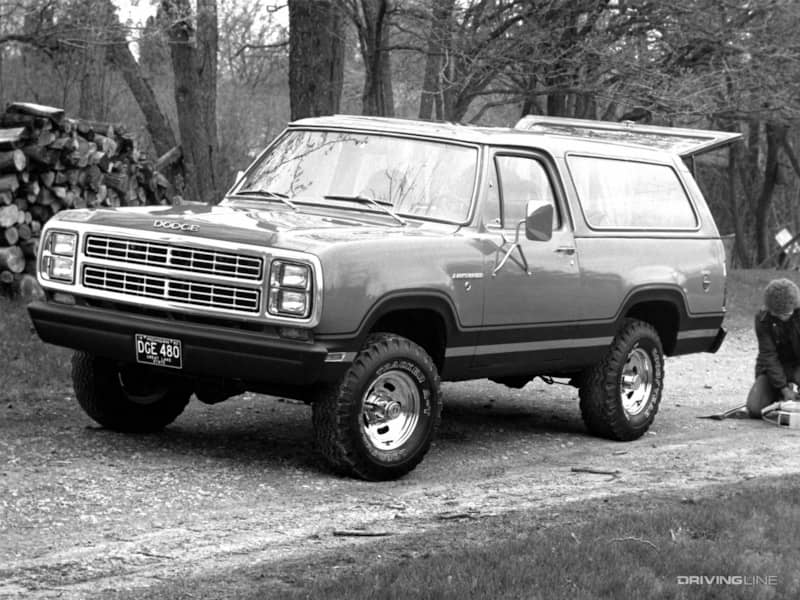
Dodge wasn't entirely sure who the market was for the Ramcharger, at least not at first. The first two years of production saw the availability of stripped-down, fleet-focused trucks that were aimed at farmers, forestry workers, and government employees, sold with as little as a single seat, a rubber carpet, and a steering wheel as standard equipment. First year models even had unusual doors that removed the B-pillar entirely, relying on the roof (if installed) and windshield for protection in a rollover.
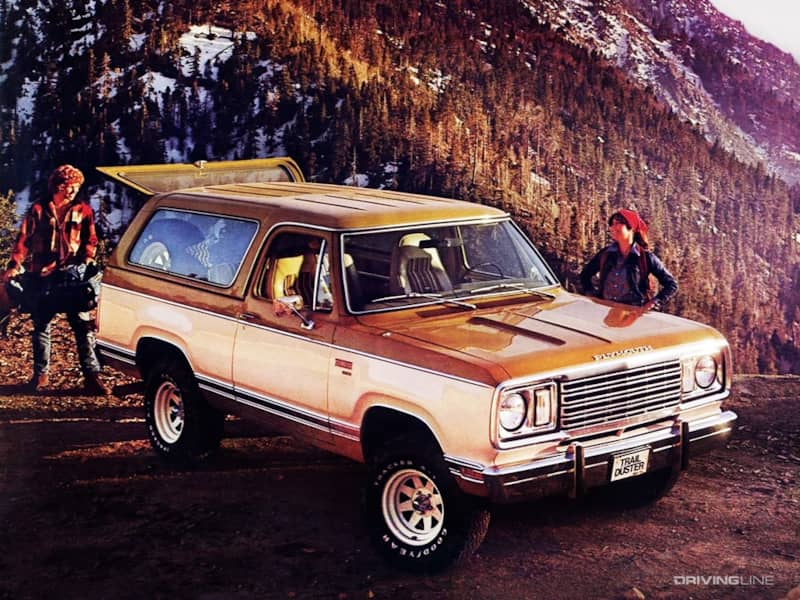
As time went on the Ramcharger gained creature comforts, including a Styrofoam cooler console and eventually a rear bench seat, but even when the second-generation model rolled around in the '80s the Dodge was still fairly task-focused in terms of ride and personality. The brutish nature of the truck was accentuated by trim levels and packages with names like 'Macho' and 'Top Hand.'
Parts Bin Brawn
Mechanically the Ramcharger dipped into the same well as the D Series, which meant it had access to the Pentastar's unkillable 225 cubic inch 'slant' six-cylinder engine (good for just over 110 hp) at the low end and, for a brief period in the middle of the decade, a 235hp version of Chrysler's 440 cubic inch big block V8.
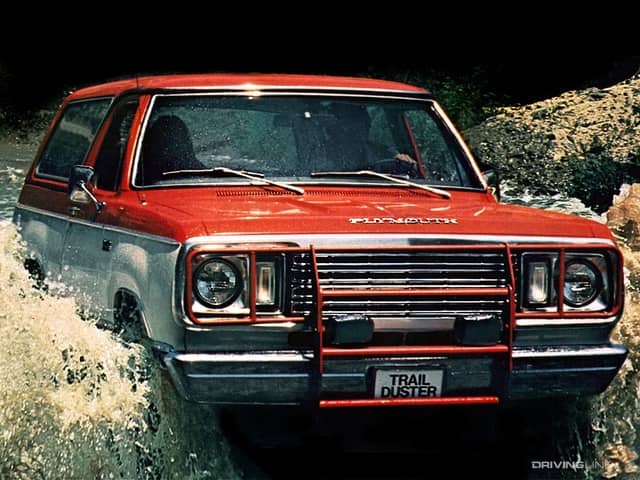
Most first-generation Ramchargers, however, featured either a 318 cubic inch V8 (up to 135 hp) or a 360 cubic inch V8 (160-175hp), with a 400 cubic inch motor also on offer. Transmission choices included three-speed and four-speed manuals, or a three-speed automatic.
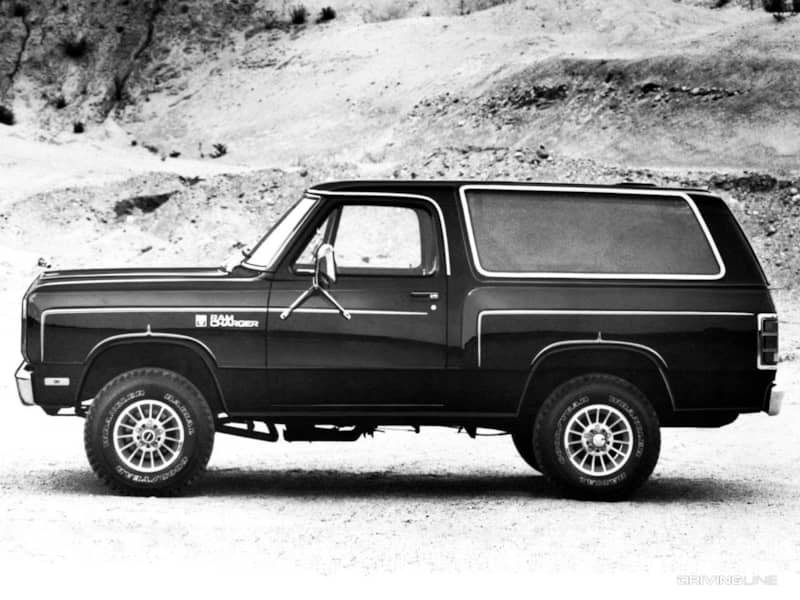
Full-time four-wheel drive was a feature from 1974-1979, when it was replaced by a part-time unit. Both transfer cases delivered low-range gearing, and the Ramcharger came with Dana 44 axles up front and 9.25 inch axles at the back, with the option of a limited-slip differential. Suspension-wise, four-wheel drive Ramchargers rode on leaf springs at all four corners, but rear-wheel drive models featured a smoother coil-spring setup for the forward axle.
New Truck, New Ramcharger
All of the above also applied to the Plymouth Trail Duster, a much more rare twin to the Dodge SUV that only sold a handful of examples. When the D Series was refreshed for the 1981 model year, so were the Ramcharger and the Trail Duster, but it proved to be the final appearance for the latter, which disappeared from Plymouth dealerships by 1982.
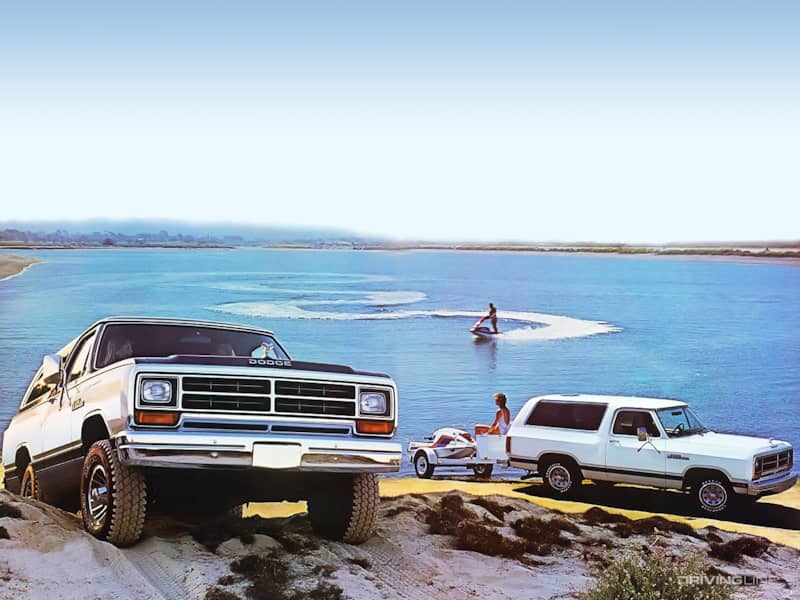
Other changes were in store for the Ramcharger as its soldiered through its second decade. The more detailed styling of the new D Series served the truck well, even if its interior remained just this side of plush. The new welded-on roof incorporated rear glass that curved above backseat riders to give them a better look at the world passing them by (when it wasn't giving them a sunburn, that is), and a fiberglass liftgate was easier to pop open.
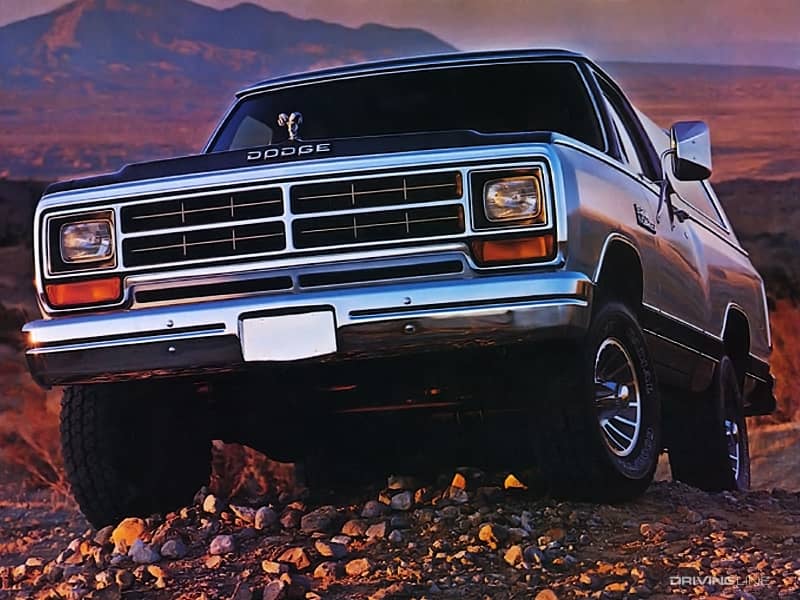
By 1982, engine options were simplified to a choice between the 318 and 360 cubic inch V8s. The four-speed manual gearbox remained on the order sheet all the way to 1992, (with the three-speed auto replaced by a four-speed auto that same year), and automatic locking hubs arrived in 1985 to facilitate shift-on-the-fly 4x4 action.
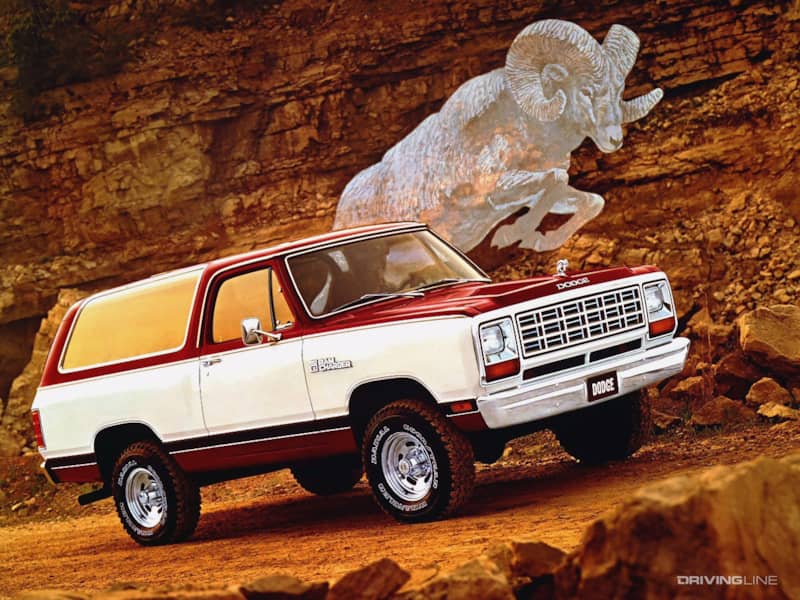
Power remained modest: the 318 climbed to from 120 to 170 horses with the advent of throttle-body fuel injection in 1988, and then to 230hp in 1992 thanks to a multi-port setup. TBI arrived for the 360 in 1989 (193hp), with multiport a late bloomer in the final 1993 model year (230hp and 325 lb-ft of torque).
End Of An Era
In the early '90s the Ramcharger's sales had fallen to under 4,000 per year, which was less than a third of its volume in the 1970s. There was no great mystery as to why: SUVs were moving towards becoming practical family drivers, which meant a rough-and-tumble, fuel-hungry model like the two-door Ramcharger was a tough sell.
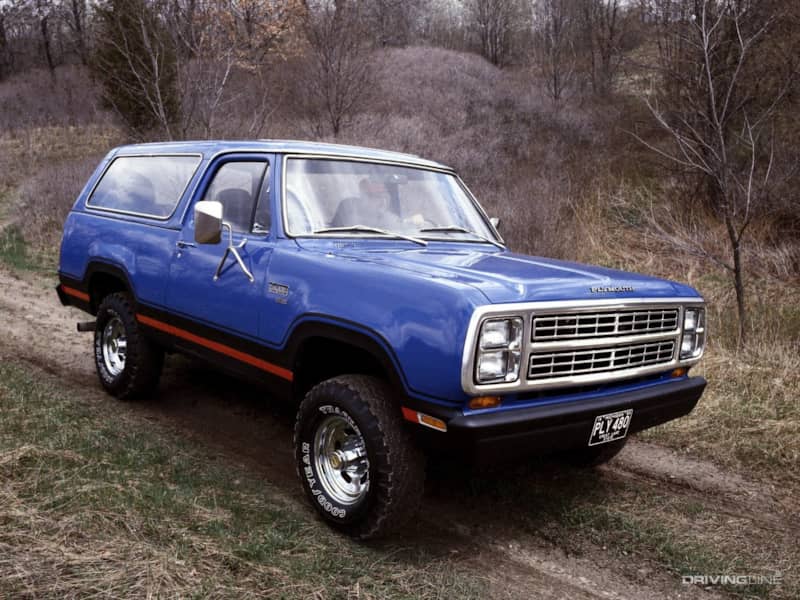
Dodge had big plans for the Ram, which was on the very of its 1994 redesign that shook the pickup world to its core and changed full-size trucks forever. The Ramcharger wouldn't be part of that revolution, however. Despite having toyed with the idea of giving Dodge a Ramcharger version of the Grand Cherokee platform, Chrysler instead decided to focus on Jeep as its SUV brand and have Dodge stick to trucks in the U.S. and Canada.
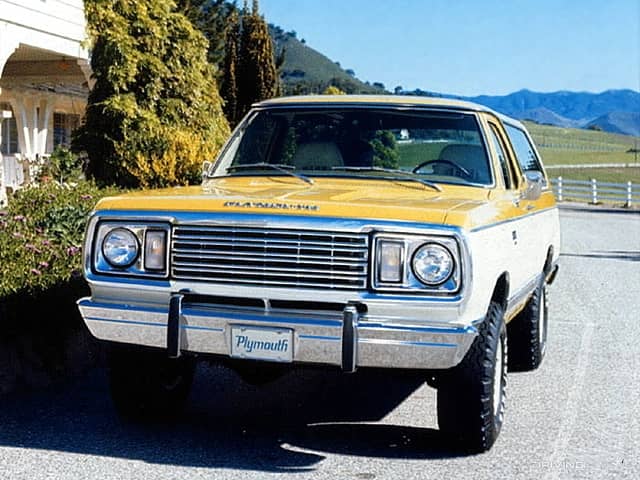
At the time, the move made sense. The Blazer and the Jimmy had transitioned to providing four-door accommodations in the form of the Yukon and the Tahoe, with GM phasing out their two-door equivalents by the end of the decade. Ford also put the Bronco back in the stable after 1996 when the four-door Explorer proved to be a much more popular, and versatile, choice.
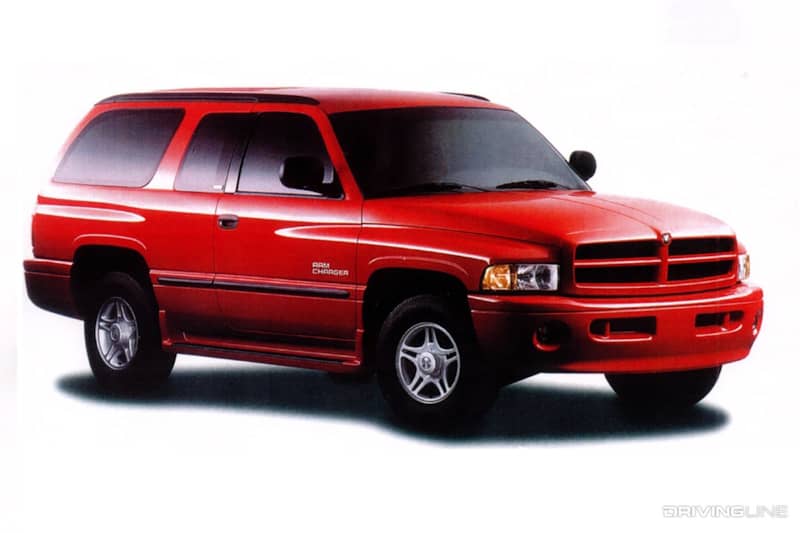
When Dodge did get back into the sport-utility game it was with the four-door Durango that traded on the Dakota pickup's mid-size charms. Only the Mexican market received a short-lived, cobbled-together Ramcharger that featured the front end of a Ram pickup and the rear hatch of a Dodge Grand Caravan minivan.
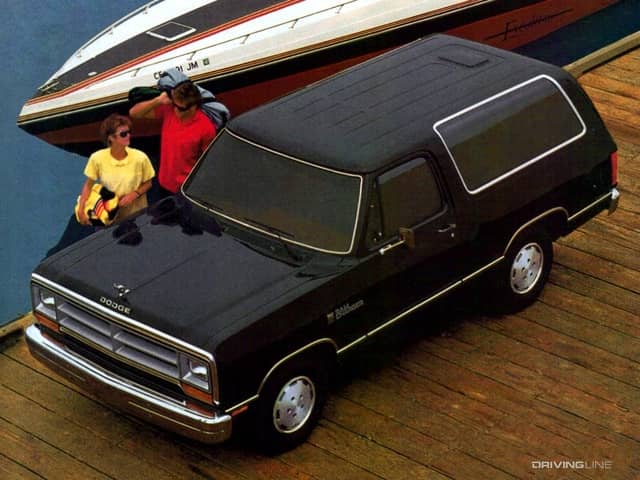
Today the Ramcharger name sits idle, awaiting the same attention recently afforded to all-new versions of the Chevrolet Blazer and the Ford Bronco. With so much of Dodge's future uncertain, it's difficult to say whether the Ramcharger could benefit from a similar retro rebirth, but in an industry that thrives on nostalgic recycling its too early to count out another blast from the SUV past.




